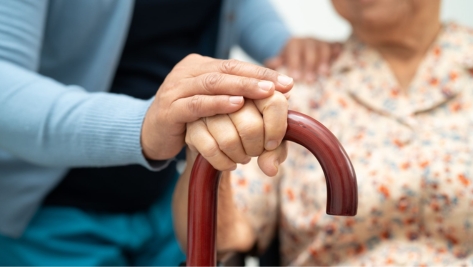Secondary Victims

Secondary Victims and Quantifying Psychiatric Claims Involving Children
Secondary victims who witness an accident
I recently settled a claim for psychiatric injury for post-traumatic stress disorder (“PTSD”) for a teenage client. The tragic turn of events was that my client, who was seven years old at the time, and their sibling aged five, were on their way home from school, having been collected by their mother, when my client’s sibling was hit by a lorry and fatally injured. My client had witnessed first-hand their sibling being killed.
Liability for the accident was established and the lorry driver served time in prison. My client’s mother and other members of the family who were on scene in the immediate aftermath were successful with their claims for psychiatric injury as secondary victims, although there was some dispute whether those on scene post the traumatic accident satisfied the criteria for bringing such claims.
The case law for secondary victims
The legal position remains as per the test set out in the leading case of Alcock v Chief Constable of South Yorkshire Police [1992] 1 AC 310. Due to the potential for multiple claims for damages arising out of a single accident, the courts have been anxious to restrict the number of claimants and the criteria which must be satisfied, including the necessary proximity of a relationship between the claimant and the primary victim (the deceased). In short, additional hurdles to mere proximity of harm are that the claimant must:-
- Have a relationship of love and affection with the primary victim;
- Have witnessed the event or come across the immediate aftermath;
- Have a direct perception of harm to the primary victim;
- It must be foreseeable that a person of reasonable fortitude would be likely to suffer psychiatric injury witnessing such an incident.
Quantifying the claim
There was no question that my client met the eligibility criteria. However, quantifying their claim was far from straightforward. It was accepted that my client had no prior history of any psychiatric or psychological concerns. My client’s mother described them as an enthusiastic and cheerful child prior to the fatal accident. Unsurprisingly, given the close ages, my client was particularly close to their younger sibling. They shared a bedroom and played together. My client was reported to be suffering multiple symptoms following the tragic accident, including increased nervousness, aggression, mood swings, nightmares about the accident, intrusive memories and flashbacks. As my client grew older, they described feeling sad, not wanting to play with their friends, missing their sibling and feeling a sense of responsibility towards the sibling and concern for their parents.
Impact of witnessing the accident
My client lacked interest in their studies and life generally, causing their parents serious concerns that their behaviour did not fit in with that of children of their age. My client spent most of the time alone in their bedroom when not in school, often doing little. More importantly, the accident had a profound effect on their schooling. My client had changed schools due to the family moving away from the area where the accident occurred. Their academic achievements began to decline as they got older. My client struggled in all subjects but managed to pass a few GCSEs, though the results fell far below their and their family’s expectations.
Expert evidence confirmed that my client suffered with a moderately severe PTSD. Family therapy as well as individual therapy was recommended. Initially it was thought that with treatment my client had a good prognosis and would return to an increased level of functioning. However, unfortunately, my client found it very difficult to engage with treatment and this was stopped.
Our child and adolescent psychiatrist concluded this was a complex case where it was very difficult to provide for a definitive prognosis considering the overwhelming and enduring impact on the whole family. Alternative treatment was explored but that also proved difficult for my client.
Court approval in children cases
My client and their family were very keen to bring this claim to a closure. It was causing a lot of stress and anxiety. Litigation is always a stressful process, but it was more so for my client whose whole family had endured the impact of the traumatic accident. However, as my client was still a child, I explained any settlement would have to be approved by a judge in court and we simply could not settle the claim until we had a clearer prognosis. Further expert evidence was obtained, which confirmed that my client’s PTSD symptoms were ongoing, and that formal treatment was unlikely to help at this stage, given my client’s difficulty with engagement. Further alternative treatment was recommended including anti-depressants and buddy support to help my client engage with activities that were not connected to the family. It was recommended that there be provision for my client to have access to private therapy when they were older and felt able to seek treatment.
The case eventually reached a stage where it was felt to be in my client’s best interests to attempt settlement. However, there were uncertainties over whether they would finish formal education, move on to further education and hold down a job. During various discussions, my client had expressed a desire to study A levels and go on to university. However, whilst my client was very bright, they disliked studying and academically, they were struggling. There were concerns that if there were further episodes of deterioration in my client’s mental health requiring intensive therapeutic treatment, they were likely to have a very limited earning capacity and was therefore likely to suffer a loss of earnings. My client may also in such circumstances require additional care and support.
As with most cases involving children, it was very difficult to assess my client’s likely future if the accident had not occurred. For this purpose, it was necessary for us to look at the family history. My client’s case was complicated by the fact that one of their older siblings did very well and went on to obtain a professional job whilst their other sibling did not do so well.
Settlement for secondary victims
We put forward a claim for damages for the injuries themselves and claimed as financial losses past care and assistance, treatment costs, travel expenses and other bits and pieces as well as future losses, including treatment costs, care, professional support and future loss of earnings. The claim eventually settled for hundreds of thousands of pounds. My client and their parents were pleased to have reached an agreement.
This was a case that had taken a few years to settle, not least due to my client’s age, the need to wait for outcome of treatment, the uncertainties over their future and the very delicate family circumstances. It required very careful management.
Partner Sana Bibi is a personal injury specialist. Having suffered catastrophic injuries, her clients and their families have had their lives changed in an instant. Sana determinedly makes a difference to her clients’ lives and pursues a level of damages that will help them manage their new ‘normal’. You can reach her at sana.bibi@anthonygold.co.uk or on 020 7940 4060.
Please note
The information on the Anthony Gold website is for general information only and reflects the position at the date of publication. It does not constitute legal advice and should not be treated as such. It is provided without any representations or warranties, expressed or implied.
Our Latest Injury & Medical Claims Insights
- September 26, 2025
Intermediate track injury claims: the rise of early settlement offers
- August 26, 2025
Anthony Gold Solicitors welcome Helen Whittam as a new Support and Rehabilitation Coordinator in the Injury and Medical Claims Team
- August 19, 2025
Contributory negligence and children
- August 13, 2025
Video: From tragedy to triumph – Eliezer’s journey after a life-changing accident
- July 9, 2025
What is Contributory Negligence and How Could it Affect Your Claim?
- June 18, 2025
Hobson v Hammond and another [2025] – when is an omission to investigate symptoms illogical?
Latest Articles
View allGuide: October 3, 2025
Guide: October 3, 2025
Contact us today
"*" indicates required fields
Contact the commercial
& civil Dispute team today
"*" indicates required fields
Contact the Conveyancing team today
Contact the Conveyancing team today
Contact the Wills, Trusts
& Estates team today
Contact the Court of
Protection team today
Contact the Employment Law team today
Contact the Clinical Negligence team today
Contact the Family & Relationships team today
Contact the Personal Injury Claims team today
Contact the leasehold & Freehold team today
Contact the Corporate & Commercial team today
Contact the housing & disputes team
"*" indicates required fields














